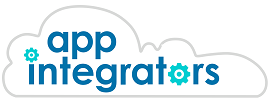Presumably you have a “Contact Us” form on your website. A visitor submits an enquiry on the form. What process do you have in place?
1.
When you check your email inbox, you see that a new form submission has been received. If you are not in the middle of doing something else, you compose an email to the enquirer, otherwise you diarise it for later. These days this approach is just not good enough. The enquirer is not sure that their message has been received (even if, after submitting the form on the site, the page says “thank you for submitting your form”). If for some reason you only get to the message a day or two later, you will have made a terrible first impression on your customer.
2.
Upon receipt of the form submission, a generic email is triggered and sent to the enquirer. Something like: “Hi there, we will get back to you“.
3.
As above, except in this instance, the email is personalised. An email template is used and instead of “Hi there” the enquirer gets a “Dear Jim”. Other details can also be personalised, like perhaps an order or reference number.
4.
As above, but this time there are different email templates, and the template the email is sent from is based on conditional logic. Usually this is accompanied by an additional question on the “Contact Us” Form, like “I am an existing customer” Yes/No. Existing customers will receive the “Existing Customer” template and new people the other.
5.
As above, but with advanced automation. Something like: a response coming from an existing customer does a detour to your customer database, looks up your customer by their email address and then adds further personalisation to the email. Like “Hey we noticed that you have not yet uploaded a profile pic”. After the initial email is sent the automation includes a three day delay with a follow-up email to rate the service. A record of the latest email is added into the customer database, for reference purposes.
With the help of an integration expert these steps could even happen across different web apps. The customer database may reside on Hubspot, or Salesforce, or possibly even a Google Spreadsheet. After the first email is sent, the second email could be sent from another app such as MailChimp or constant contact.
***
In the past, setting up all of these automations would have required a lot of expensive custom coding, but with the recent proliferation of platforms offering turnkey automation and integration services, it can be achieved surprisingly quickly. If you are interested in how your own small business can benefit from transactional email contact us, and we can make recommendations based on your own unique business processes.

Recent Comments